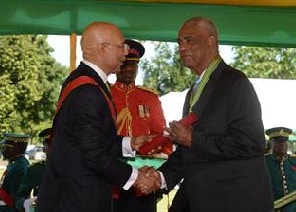Summit of the Americas: An Introduction
WASHINGTON — The fifth Summit of the Americas in April will promote human prosperity, energy security, environmental sustainability, public security and democratic governance.
All 34 democratically elected heads of state are gathering in Port of Spain, the capital city of Trinidad and Tobago, for three days of meetings and talks on the future of the Western Hemisphere and to examine political, social and economic issues confronting the region.
The overarching goal of the summit is to improve the lives and livelihoods of all residents of the Americas.
It is also President Obama’s first meeting with all the leaders of Latin America, the Caribbean and Canada at the same time. The president has met separately with Canadian Prime Minister Stephen Harper and Brazilian President Luiz Inácio Lula da Silva. There will be no representative from Cuba at the conference.
FIRST SUMMIT IN 1994
Since the early 1990s and after decades of civil strife and military rule in some countries of the region, 34 of the 35 governments in the Western Hemisphere now have elected democracies. And nearly all have moved from state-run, central economies to economic liberalization and free trade, according to Peter Meyer, a Latin American affairs analyst with the U.S. Congressional Research Service.
“In order to build on these values shared by the United States and Latin America as well as develop an agenda for the hemisphere’s future, President Clinton organized the first modern Summit of the Americas,” Meyer said in a recent report for the U.S. Congress.
The first summit was held in 1994 in Miami. There have been three Summits of the Americas since then — Santiago, Chile, in 1998, Quebec City, Canada, in 2001, and Mar del Plata, Argentina, in 2005 — plus two Special Summits of the Americas and a number of ministerial-level summits. One special summit on sustainable development was held in Santa Cruz, Bolivia, in 1996, and a second in 2004 produced the Declaration of Nuevo León in Monterrey, Mexico, in 2004. Previously, hemispheric leaders met in 1967.
Meyer said in his report that some observers believe one of the greatest accomplishments of the summit process has been the Inter-American Democratic Charter at the Quebec City summit, in which the Americas committed to a democracy clause. The clause led to the Inter-American Democratic Charter in September 2001. “The charter affirms the peoples of the Americas’ universal right to democracy and asserts that the governments of the region have an obligation to promote and defend democracy,” Meyer said.
Another example of achievements is the plan of action that was developed at the last Summit of the Americas in 2005 in which the countries of the region agreed to act in solidarity with the Haitian people to improve democracy in the island nation.
2009 SUMMIT
The 2009 summit’s theme is “Securing our citizens’ future by promoting human prosperity, energy security and environmental sustainability.” The draft declaration of commitment of this summit combines the traditional summit declaration and plan of action into one document that proposes 65 commitments under broad themes: human prosperity, energy security, environmental sustainability, public security and democratic governance.
During a recent visit to Chile and Costa Rica, Vice President Biden said he was there to consult and listen to the needs of the people of the hemisphere. Biden said in an article placed in Latin American newspapers that he was also helping prepare the president for his first hemispheric summit.
“These meetings are an important first step toward a new day in relations and building partnerships with and among the countries and people of the hemisphere,” Biden said. “The president and I understand that only by working together can our countries overcome the challenges we face. Today, we are more than just independent nations who happen to be on the same side of the globe. In today’s interconnected world, we are all neighbors who face many common concerns.”


